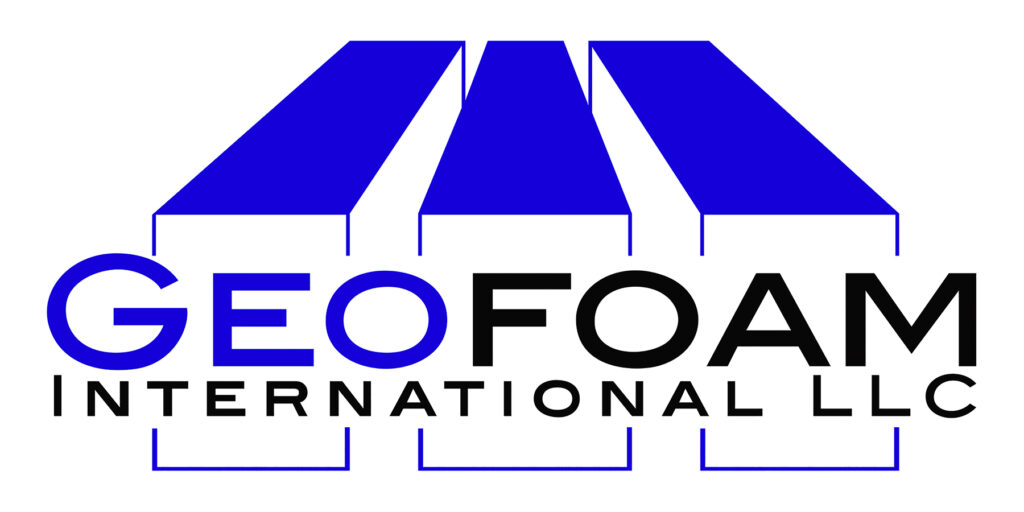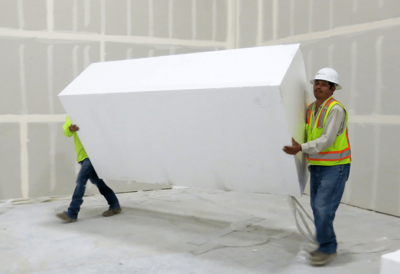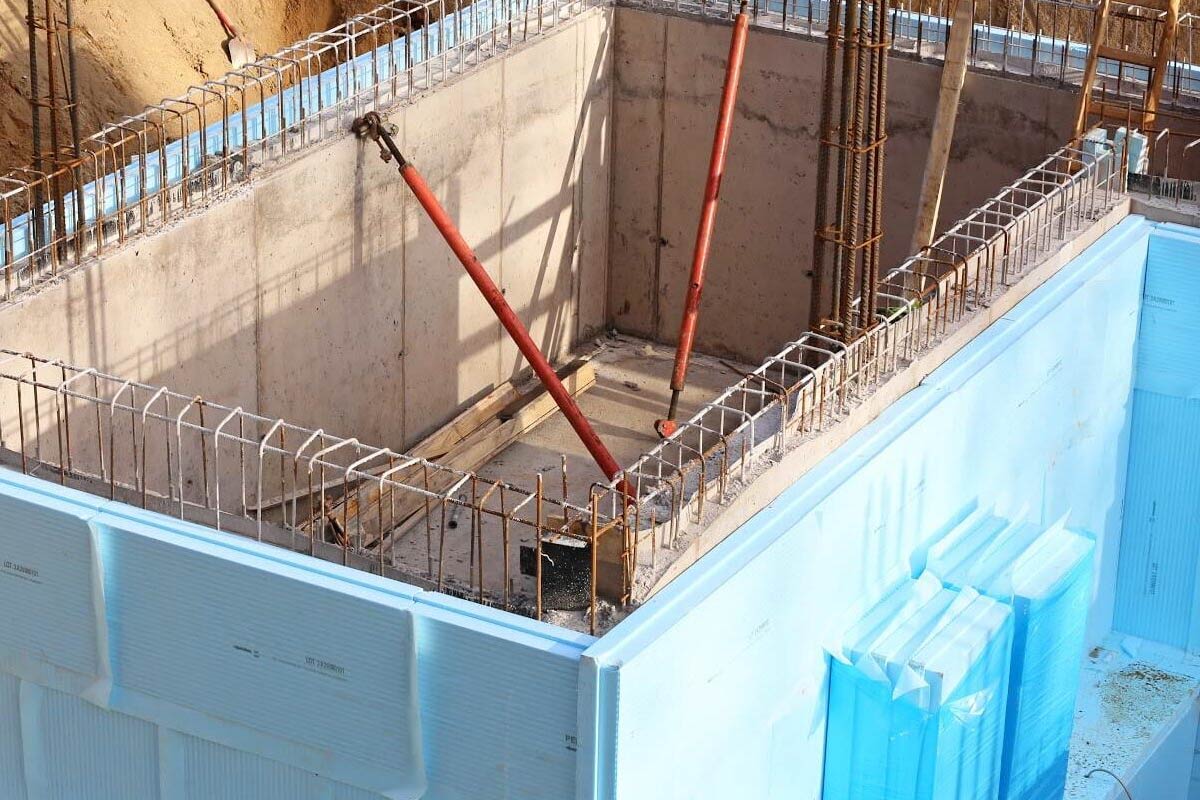Expanded Polystyrene Geofoam was first brought to market in 1950 and has been used for thousands of different construction projects throughout the world.
Geofoam is a multi-functional construction material that has all different types of applications. It is a go-to material for building different structures, foundations and buildings because of its unique physical properties, flexibility and the great value it brings. From roadways, landscaping and thermal insulation to stadiums and movie theaters, the possibilities are endless when it comes to geofoam. Here are 5 important geofoam applications and why they matter.
Road Construction
Geofoam acts as a major support material for different aspects of road construction. When new roads are built, the soil that they are often created on is soft or loose, which calls for a flexible yet reliable fill material that can provide more stability than traditional compacted fill. EPS geofoam is often used to replace soil that is too weak to support the traffic that will ultimately be rolling over it. When a roadway is built, it can consist of several different layers including but not limited to the following: sand, EPS blocks that are staggered using vertical joints and pavement that tops it, moisture membrane protection, traditional compacted fill, and more.
Compared to other fill materials, EPS geofoam has already been engineered with quality assurance in mind. It is easy to handle and a reliable foundation that can withstand various compression levels depending on the type of EPS being utilized.
Geofoam can also be used to easily and effectively widen roadways. Again, the type of soil surrounding the existing roadways may not be substantial to build more road on. In this case, geofoam works as a reliable fill that helps reduce construction time and also creates less of an interruption to the existing infrastructure.
Airport runways need to be built on fill material that can withstand a high compression level, and EPS geofoam is the perfect material for just that. Many of the airport runways throughout the world have incorporated Geofoam into their structural designs due to the cost savings when comparing to traditional fill methods, as well as the speed of installation when compared to the alternative.
Additionally, geofoam material can reduce noise and vibration under railways and highways. This helps further make driving over them a safer more stable environment.
Landscaping and Slope Stabilization
Due to its lightweight build, EPS geofoam is often used within landscaping structures such as roof gardens in urban areas. Custom geofoam blocks bode well with the odd geometries that are often required to create different landscapes.
Geofoam can also be used to help stabilize slopes, which can prevent landslides. It is used to replace existing soil within a slope to improve stability and reinforce the structure.
Insulation and Foundation
One of the most popular applications for geofoam is within building construction. The material it is made from is able to withstand pressure, yet is lightweight and easy to manage, making it the perfect material to use for insulation and building foundational structures. A high-density geofoam can act as a buffer between the earth and a wall which can help distribute the weight of the earth more evenly and reduce pressure.
Geofoam is ideal for thermal insulation and can help reduce overall heating and air conditioning costs. It is often used to fill building walls and within roofing and ground structures for all types of residential and commercial buildings. The R-Value of Expanded Polystyrene is the measurement of heat transfer through the sheets or blocks of foam.
Entertainment and Sporting Facilities
Geofoam is used widely within entertainment and sporting facilities such as auditoriums, stadiums and gymnasiums. Geofoam blocks are stacked to create the desired structure and framework of the site, especially seating areas. For example, the tiered-level seating arenas are created using geofoam blocks.
Bridge Support and Levee Protection
Many bridges rely on the support provided by geofoam. It is a lightweight fill that reduces the imposing weight on the ground foundation as well as evenly distributes that weight across the entire surface of EPS. Geofoam can be used to fill gaps in a bridge that are no longer structurally sound to support traffic and weight as a quick fix that provides superior compression characteristics.
Geofoam is also very common in the construction of levees due to the nature of their placement along water structures. Over time, the soil that these levels are built on endure prolonged compression and eventually, the levees need to be raised to continue to provide flood protection. Engineers will use EPS geofoam to reinforce these levees and protect the structures from impeding around them.
Geofoam Advantages Over Other Fill Materials
Since being brought to market for the first time in the 1950’s, expanded polystyrene geofoam has been used for thousands of different construction projects throughout the world. It has eased the process of construction and enabled people to build on a large scale in a shorter period of time. Today, EPS geofoam is used all over the world to build everything from stadium seating riser platforms to buildings to roads and bridges. The material is lightweight and easy to work with, and considerably reduces the cost and overall construction schedule.
Expanded polystyrene sheets are different from construction based Styrofoam sheets or Styrofoam blocks in the way that it is manufactured and some of the physical properties as well.
Materials like stone, earth and cement are heavy. Blocks of EPS foam are now a common sight in most large-scale constructions sites.
Geofoam is manufactured to be an ultra-lightweight fill material that is resistant to damage caused by compression. It is flexible to work with and is considerably lighter than other fill alternatives. The material can withstand various external factors such as weather and climate, making it a durable and reliable solution in all different types of construction and building contexts.
Look to Geofoam International for All Geofoam Needs
Whatever application you may need for geofoam, Geofoam International is here to help. Not only do we work with only the highest quality foam blocks, we can cater to the type of construction or building you need done. We have customizable geofoam to fit different requirements, from roadways to landscapes to buildings.
Whether you’re an architect, engineer, construction contractor or builder, Geofoam International is here to help you succeed on your next project. Our product and services are superior and we guarantee quality assurance. Look to Geofoam International for all foam block construction needs and solutions.









